The first electronic computer was built during the 1940s by John Vincent Atanasoff, a professor of physics and mathematics at Iowa State University, and one of his students, Clifford E. Berry. But the history of computing started centuries earlier. For example, in 1493 Leonardo da Vinci drew a sketch of what appears to be a mechanical calculator. And the first calculating machine, invented by French entrepreneur Charles-Xavier Thomas de Colmar, was put into serial production in 1851.
Without the work of these and many other inventors, it’s unlikely that humans would have invented the electronic computer when they did. Read on to discover more about these great innovators.
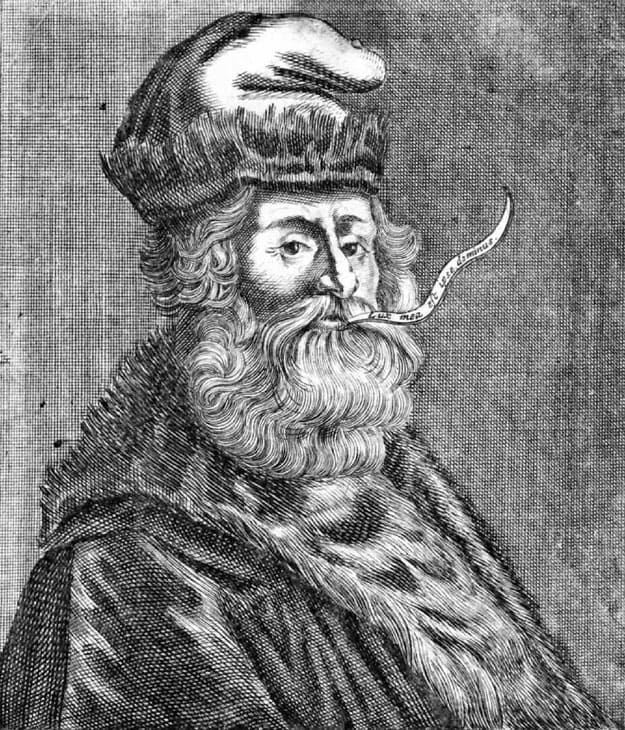
Ramon Llull
Doctor Illuminatus Ramon Llull is an amazing figure in the field of philosophy during the Middle Ages, and one of the first people who tried to make logical deductions in a mechanical, rather than a mental way. His method was an early attempt to use logical means to produce knowledge… Read more about Ramon Llull
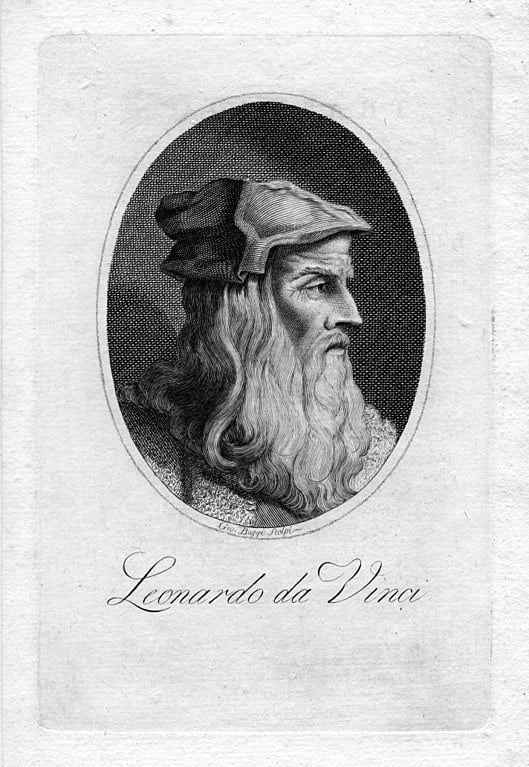
Leonardo da Vinci
In Leonardo’s manuscript Codex Madrid I, compiled by the genius in 1493, when he served at the Castle of Milan under the duke Ludovico il Moro, there is a sketch, picturing a mechanism, which is very likely to be designed for calculating purposes. Leonardo da Vinci is probably the most.. Read more about Leonardo da Vinci
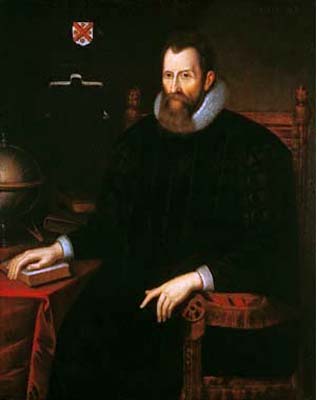
Napier’s Logarithms
In July 1614 in Edinburgh, Scotland, was published a small book (57 pages of explanatory matter and 90 pages of tables) which will make a key advance in the use of mathematics. The book was Mirifici Logarithmorum Canonis Descriptio (Description of the Marvelous Canon of Logarithms), written by a Scotsman—John.. Read more about Napier’s Logarithms
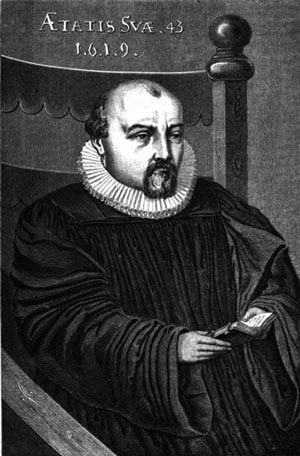
Salomon de Caus
Jean Salomon de Caus was a French Huguenot engineer and scientist, who spent his life moving across Europe. He worked as a hydraulic engineer and architect under Louis XIII from 1623 till his death in Paris in 1626. de Caus also was in service of the Prince of Wales and.. Read more about Salomon de Caus
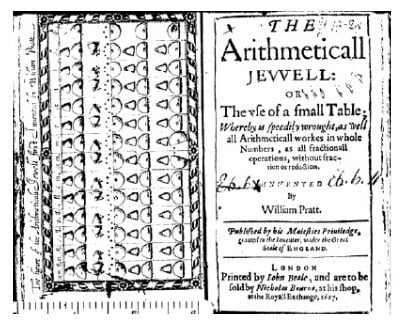
William Pratt
A simple calculating device with the fancy name Arithmetical Jewell was designed by William Pratt in the middle 1610s, and described in the book of the same name (The Arithmeticall Jewell: or the use of a small Table Whereby is speedily wrought, as well all Arithmetical workes in whole Numbers,.. Read more about William Pratt.
Napier’s Bones
In the end of 1617 in Edinburgh after the death of John Napier was published (in Latin language, which was a common practice then) his small book—Rabdologiae seu Numerationis per Virgulas libri duo. Looking to ease his own difficulties in calculating logarithmic tables, and impatient with the tedious and error-prone process.. Read more about Napier’s Bones.
Wilhelm Schickard
One of the most important events in the life of the modest deacon of Nürtingen, Wilhelm Schickard, was his meeting in October, 1617, with the great astronomer Johann Kepler. Obviously during this meeting Kepler immediately recognized the massive intellect of the young Wilhelm, and encouraged his occasions with sciences, which.. Read more about Wilhelm Schickard
Blaise Pascal
The Roulette ou Roue Paschaline (celebrated as Pascaline in France and abroad) of the great french scientist Blaise Pascal was for more than three centuries considered as the first mechanical calculator in the world, as the Rechenuhr of Wilhelm Schickard was not widely known until late 1950s. Pascal most probably.. Read more about Blaise Pascal
Tito Livio Burattini
In 1650s the Italian scientist Tito Livio Burattini created a calculating device (so called ciclografo), which in 1658 (or even before) he donated to Ferdinando II de’ Medici, Grand Duke of Tuscany (there are two letters from the Italian scientist Giovanni Alfonso Borelli, dated November and December, 1658, which mentioned.. Read more about Tito Livio Burattini
Samuel Morland
The English polymath Samuel Morland invented in early 1660s a total of three calculating machines: one for multiplication and division, one for trigonometry, and one for addition and subtraction. Morland’s calculating machines were simple, but became rather popular and London instrument-makers were still selling Morland’s calculators as late as 1710.. Read more about Samuel Morland
Charles Cotterell
In 1667, Sir Charles Cotterell, an English courtier and translator, suggested a calculating instrument, called Arithmetical Compendium (Instrument for Arithmetick). It was a combination of Napier’s Bones with a bead-type abacus, used to avoid writing down the partial products of multiplication using the rods. In fact, Cotterell’s idea was popularized.. Read more about Charles Cotterell
Athanasius Kircher
The prominent German Jesuit polymath Athanasius Kircher, whose interests covered “everything under the sun”, has a significant place in this site, because of his version of the Llullistic method, his automata, and his calculating tool Organum Mathematicum. Read more about Athanasius Kircher
Claude Perrault
Around 1670 the Parisian doctor of medicine and self-taught architect Claude Perrault devised a simple calculating device, called Abaque Rhabdologique. The device was firstly described in a small book—Recueil de plusieurs machines, de nouvelle invention… Read more about Claude Perrault
Gottfried Leibniz
The great polymath Gottfried Leibniz and Charles Babbage are (to my mind) the two greatest persons in the history of computers and computing, because only they manage to anticipate events in this area with centuries. In the second half of 17th century Leibniz not only created the first mechanical calculator,.. Read more about Gottfried Leibniz
René Grillet De Roven
In 1673 the Parisian mechanic and watchmaker of King Louis XIV, René Grillet de Roven, published the small (49 pages) book Curiositez mathematiques de l’invention du Sr Grillet horlogeur a Paris. The book describes several different inventions, but most of it is devoted to his Nouvelle machine d’arithmétique. Read more about René Grillet De Roven
Claude Dechales
The French Jesuit mathematician Claude François Milliet Dechales (1621–1678) was best remembered for his book Cursus seu mundus mathematicus, a complete course of mathematics, published in Lyon in 1674. Dechales published also several other books, and in one of them, devoted to the principles of navigation—L’ art de naviger demontré.. Read more about Claude Dechales
Cesar Caze
The simple adding device of the Frenchman Cesar Caze (1641-1719), which he called Nouvelle machine arithmétique and created around 1696, could be considered as one of the most basic calculating devices, which can be invented, a simplified version of the Abaque Rhabdologique of Claude Perrault. Read more about Cesar Caze
George Brown
George Brown (1650-1730) is a Scottish arithmetician and dissenting minister, known primarily for the invention of an arithmetical instrument, called Rotula Arithmetica—a very simple and not very successful calculating device for addition, subtraction, multiplication, and division. Read more about George Brown.
Giovanni Poleni
In 1709 the young professor of astronomy, meteorology and mathematics and Marquis of the Holy Roman Empire Giovanni Poleni published his first book—Miscellanea, a small collection of dissertations on physics (it was a sort of doctoral thesis to obtain the University appointment). Miscellanea includes dissertations on barometers, thermometers, and conical..
Read more about Giovanni Poleni.
Lépine
The Machine Arithmetique of Lépine (sent for approval to l’Academie Royale des Sciences in 1725) was firstly described in the 1735 book of Jean Gallon Machines et inventions approuvées par l’Academie Royale des Sciences, depuis son établissment jusqu’a présent; avec leur description (see Gallon description of Lepine). Read more about Lépine
Jacob Leupold
In 1727, after the death of the German scientist and engineer Jacob Leupold was published the 8th volume of his encyclopedia Theatrum Machinarum. This volume, entitled Theatrum arithmetico-geometricum is the best illustrated work on calculation and measurement published during the 18th century. Read more about Jacob Leupold.
Anton Braun
When in 1724 the German mechanic Anton Braun got an appointment as a mechanic and optician of the imperial court in Vienna, Austria, he started to design a calculating machine for the purposes of the court. Braun finished his work in 1727, producing a calculating machine of a very good.. Read more about Anton Braun
Hillerin De Boistissandeau
In 1735 was published the first book of six volume set of Jean Gaffin Gallon—Machines et inventions approuvées par l’Academie Royale des Sciences, depuis son établissment jusqu’a présent; avec leur description, in which are described several calculating machines. Read more about Hillerin De Boistissandeau
Jacques De Vaucanson
Jacques de Vaucanson (1709-1782) was a great French engineer and one of the significant inventors of 18th century, who is primarily credited with creating the world’s first “true” robots in early 1730s, as well as for creating the first completely automated loom, and the first all-metal lathe in late 1740s… Read more about Jacques De Vaucanson
Christian Ludwig Gersten
In 1735 Christian Ludwig Gersten (1701-1762), a professor of mathematics at the University of Gießen, traveled to London, to be elected a fellow of the Royal Society and to present to the Society his project of arithmetical machine. Read more about Christian Ludwig Gersten
Jacob-Rodrigues Pereira
In the July 1751 issue of the earliest scientific journal in Europe—the french Le Journal des Sçavans, was published a description of Machine Arithmétique of Jacob-Rodrigues Pereire. The device was initially made as an aid for deaf and mute people. Read more about Jacob-Rodrigues Pereire
Jewna Jakobson
The mechanical calculating machine of the Jewish clock-maker and jeweler Jewna Jakobson was created around 1770 in the town of Nieswiez on the territory of former Lithuania, then Russian Empire, Poland, USSR, and now in Belarus. Read more about Jewna Jakobson
Philipp Matthäus Hahn
In 1770s the Württemberg pastor, astronomer, engineer, and entrepreneur Philipp Matthäus Hahn turned his attention to the creation of calculating machines, devising a simple calculation device (so called Rechentrommel – calculation drum), then an adding device, and finally a more elaborate cylindrical calculating machine. Read more about Philipp Matthäus Hahn
Charles Stanhope
The British statesman and versatile scientist Charles Stanhope, Viscount Mahon, was a very strange peer—a full of temperament man with enormous mental energies, voice, and earnestness, who devoted a large part of his time and income not to pleasures and parties, but to experiments, science and philosophy. Read more about Charles Stanhope
Johann Conrad Gütle
The first man, who was flashed upon to use the electricity for calculation purposes, was probably a German mechanic, showman, electrifier and miracle healer, physicist, chemist, teacher, author, and mail order company owner, named Johann Conrad Gütle (1747-1827). Read more about Johann Conrad Gütle
Jacob Auch
Jacob Auch (1765-1842) was a very good German mechanic and clock-maker, who created about 1790 a calculating machine not of original construction, but of very good workmanship. Auch was born in Echterdingen, a small town in the district of Esslingen, in Baden-Württemberg. Read more about Jacob Auch
Johann Reichold
The German pfarrer Johann Reichold (1753-1798) was a bright-minded parson, who was not so interested in theological problems, but preferred to spend his time studying and lecturing sciences, especially philosophy, mathematics and engineering. In 1792 he devised a very interesting arithmetische maschine (arithmetic machine), rather similar to the device of.. Read more about Johann Reichold
Abraham Jakub Stern
Around 1810, the Galician Jew Abraham Jakub Stern (1768-1842), a remarkable mathematician, inventor, translator, and censor, designed his first computing machine. In 1811 he sent a report to his patron Stanisław Staszic (1755-1826), outlining the device and asking for financial help, and the device was first presented to the public..
Thomas De Colmar
The first calculating machine put into serial production was the Arithmomètre (arithmometer) of the French entrepreneur Charles-Xavier Thomas de Colmar (1785-1870). Colmar conceived the idea of the arthrometer during his lengthy stay with the armies of Marchall Soult, where he needed to perform a lot of calculations. This became even..
James White
In 1822, James White, an English civil engineer and prolific inventor, published a very interesting 394-pages book with the long name A New Century of Inventions: Being Designs and Descriptions of One Hundred Machines, Relating to Arts, Manufactures, and Domestic Life. Remarkably, between the 100 machines, described by White, there..
Luigi Torchi
The machine of the Italian Luigi Torchi from Milan was the first full-keyboard/direct multiplication machine in the world, moreover it was first practical keyboard calculator, as the earlier key-driven adding machine, described by the English engineer James White, seems to remain only on paper. Some 40 years will be needed for..
Thomas Fowler
In 1840, Thomas Fowler, an English businessman, self-taught mathematician and inventor, created a unique ternary calculating machine in his workshop in Great Torrington, a small market town in the north of Devon, England. In 1842 Fowler devised a greatly improved model, which was exhibited in the museum of King’s College..
David Roth
David Roth (1808-1885) was an Austrian Jew and Parisian doctor, who around 1840 turned his attention to the design and construction of mechanical calculators. Between 1840 and 1844, Roth registered six patents (totaling 72 pages), as the first patent was registered in May 1840, the last in March 1844. At..
Chaim Zelig Slonimski
The Polish Jew Chaim Zelig Slonimski (1810-1904), a Hebrew publisher, astronomer, inventor, and science author, commenced his activities with calculating machines around 1838, when he, visiting Byelostok, heard that a Jew had spent there several days, to collect subscriptions for tables of calculations, which he had invented. The tables had..
Francis Marston
In 1842 a certain Francis Marston of Aston, Parish of Hopesay, County of Salop, England, obtained a Letters Patent №9235 for Apparatus for Making Calculations. No details are known about this machine, most probably it remained only on paper. The device of Marston combines two columns of figures arranged in..
Maurel And Jayet
In 1841 in Paris the young French student Timoléon-Louis Maurel (1819-1879) (later a good French clock-maker and inventor) devised and in the next 1842 obtained a patent for 15 years (see the patent No. FR14529 from 18 November 1842) for his first calculating machine for multiplication and division, which certainly..
Jean-Paul Garnier
In middle 1843 the brilliant French mechanic and watchmaker Jean-Paul Garnier (best known for providing railway stations in France and Romania with station clocks), filed a patent application to Department of Agriculture and Commerce for mechanical calculating machine (France was one of the first major industrialized countries to adopt a..
Jean-Baptiste Schwilgue
In 1844 the French engineer Jean-Baptiste Schwilgué from Strasbourg, together with his son Charles-Maximilien, patented a key-driven calculating machine, which seems to be the third key-driven machine in the world, after these of James White and Luigi Torchi, but was certainly the first popular keyboard calculator. Similar machines will be..
Izrael Staffel
Around 1835 the young Warsaw watchmaker ans inventor Izrael Abraham Staffel (1814-1885) commenced building in his workshop at Marszałkowska str. 125 an advanced first calculating machine, spending his meager funds. It took him ten years to finish the device, which was demonstrated to the public as late as in 1845…
Heinrich Kummer
Several people experimented with versions of simple mechanical calculators, that included strips of metal with numbers marked on them mounted in a frame, where a stylus was used to slide these strips up and down. Let’s mention only Claude Perrault, who invented the first form of this class of devices..
Jan Józef Baranowski
The Polish economist, financier, linguist, engineer and inventor Jan Józef Baranowski was the author of many technical inventions, 17 of which have been patented in France. Interestingly, at least four of them are for calculating devices: 1. Machine for obtaining the products of numbers without multiplying (Brevet №4587 from 1846..
Victor Schilt
The calculating machine of the Swiss clock-maker Victor (or Viktor) Schilt (1822-1880) was exhibited in 1851 at the Great exposition of the works of industry of all nations in Crystal Palace, London, and received an honorable mention and a bronze medal, placed after the calculating machines of Izrael Staffel and..
Dubois D. Parmelee
In 1850 Dubois D. Parmelee, a 20-year-old student at New Paltz Academy (later State University of New York), patented a calculator, which seems to be the fourth key-driven adding machine in the world (after the machines of James White, Luigi Torchi, and Jean-Baptiste Schwilgué), thus putting the foundation of the..
John Nystrom
The Swedish born, American civil engineer, inventor, and author John William Nystrom (1825–1885) (born as Johan Vilhelm Nyström) is known as the author of many books and inventions, between them an interesting calculating device (a slide rule, type of mechanical analog computer), invented in 1848 and patented on 3 March..
Ernest-Narcisse Lobbé
In early 1850s a certain Ernest-Narcisse Lobbé, a Parisian horloger-mécanicien (watchmaker and mechanic), created one of the first keyboard calculating machines in the world (after the machines of James White, Luigi Torchi, Jean-Baptiste Schwilgué, and Dubois Parmelee). The machine (so called Additionneur mécanique à touches) was patented in 1855 (French..
Tito Gonnella
The Italian physicist, mathematician, and inventor Tito Gonnella (1794–1867), professor of mathematics and mechanics at the Florentine Accademia di Belle Arti di Firenze, is primarily known as the inventor (in 1824) of one of the first planimeters (an instrument for measuring the area, enclosed by an irregular closed curve) in..
Orlando Lane Castle
On 24 November 1857, Orlando Lane Castle (1822-1892), a professor of Latin, Oratory, Rhetoric, and Belles-Lettres at the Shurtleff College in Alton, Illinois, received a patent for a calculating machine, called Improved arithmometer for adding (see US pat. №18675) of very interesting design, operated by a clock spring, wound manually…
Thomas Hill
The improved arithmometer of the Reverend Thomas Hill (1818-1891), a Unitarian clergyman in Waltham, Massachusetts (later he became a famous scientist, educator, President of Harvard University and one of the most profound yet brilliant mathematicians in the USA), was the first key-driven calculating machine, made in the United States, which..
Niccola Guinigi
In 1850s (or even earlier) Count Niccola Guinigi-Magrini, a nobleman from Lucca, Italy, designed and made a simple dial adder (which he called Manipolatore Aritmetico—Arithmetical Manipulator) with a unique design that summed eight-digit figures up to 99,999,999. Now the only survived device is exposed in Arithmeum Museum, Bonn, Germany (see..
Niccola Guinigi
In 1850s (or even earlier) Count Niccola Guinigi-Magrini, a nobleman from Lucca, Italy, designed and made a simple dial adder (which he called Manipolatore Aritmetico—Arithmetical Manipulator) with a unique design that summed eight-digit figures up to 99,999,999. Now the only survived device is exposed in Arithmeum Museum, Bonn, Germany (see..
John Ballou
Dr. John Ballou Newbrough (1828-1891), a 33rd degree Mason, clairvoyant, vegetarian, and an avid student of the world’s religions, called by some people America’s Greatest Prophet, was an inventive man and a holder of numerous US patents, between them three patents for calculation devices. First patent he took out in..
Caroline Winter
On 12 April 1859, a certain mysterious person, named C. Winter, of Piqua, from county of Miami and State of Ohio, received the the-pages US patent №23637 for Improved Adding-Machine, which was the fourth in the USA keyboard adder, after the machines of Parmelee, Castle and Nutz, and seventh in…
John Campbell
On 9 August 1859, the young carpenter, student, and teacher from Rockville, county of Parke, Indiana, named John Tenbrook Campbell (1833-1911), obtained a patent for a simple five-positional adding device (so called Addition Machine), similar to these of the earlier French inventors Jean Lépine, and Hillerin de Boistissandeau from 1720s…
Thomas Strode
Thomas Strode (1810–1880), a storekeeper and farmer from Coatesville, Chester county, Pennsylvania, was a holder of three patents for calculating devices: US patent №30264 from 1860 for an adding machine (calculator), similar to Calculating Clock of Schickard and Pascaline of Blaise Pascal, and two patents for circular stylus-operated adding machines..
Joseph Alexander
In the beginning of 1860s Dr. Joseph Bell Alexander (1821-1871) of Baltimore, Maryland, devised a rather interesting calculating machine, and on 15 March 1864, took out US Patent №41898 for it. It seems the machine never went into production and only the Patent Office model survived to the present (kept..
Charles Webb
The American poet, author and journalist Charles Henry Webb (1834–1905) from New York was a holder of several patents for calculating devices. First was the USA patent №75322 from 10 March 1868, for an adding-machine. Later (in November, 1889) he took out two other patents for improved version of the..
John Groesbeck
In the end of 1860s, John Groesbeck (1833-1884), a consulting accountant from Philadelphia, Pennsylvania, and many years a teacher and principal of Crittenden’s Philadelphia Commercial College, devised a simple adding machine, for which he took out a US patent №100288 on 1 March 1870. The machine went in serial production..
Axel Petersson
The Swedish-Norwegian engineer Axel Jacob Petersson (1834-1884), was a universal inventor and is famous with several books and articles, and the construction of railways and viaducts, including the famous railway bridge Järnvägsbron i Minnesund, steam engines, a rotating camera for photography, military equipment like a bayonet and a repeating rifle,…
George Grant
The American engineer and entrepreneur George Barnard Grant (1849-1917) is a notable figure in the world of mechanical calculator. He was the creator of several all-purpose calculators, but also of a magnificent Difference Engine. As a whole, Grant devised four different calculating machines: three all-purpose calculators, and a sophisticated machine..
Edmund Barbour
Edmund Dana Barbour (1841-1925), a businessman, philanthropist, and genealogist from Boston, Massachusetts, is a remarkable figure in the world of mechanical calculators. In 1872, he took out two very interesting US patents for calculating devices (U.S. patents №130404 and №133188), describing a machine, which seems to be the first representative..
Frank Baldwin
Frank Stephen Baldwin (1838-1925), native of Connecticut, devoted almost all his life to inventing and manufacturing machines. He applied for his first patent in 1855, only 17 years old, and took out numerous patents in the next several decades. In the beginning of 1870s, while visiting the office of a..
Willgodt Odhner
There are a few legends about how the young Swedish engineer Willgodt Odhner (1845-1905) became interested in calculating machines in the beginning of 1870s. However, there are two stories about that told by Odhner himself. First of them is, that as a quite young engineer Odhner had in 1871 an..
Pafnuty Chebyshev
Pafnuty Lvovich Chebyshev (Пафнутий Львович Чебышёв) (1821-1894) was a prominent Russian mathematician, who is considered to be a founding father of Russian mathematics. Besides the mathematics, Chebyshev spent much of his time working on questions of mechanical engineering and in early 1870s he designed and manufactured very interesting calculating machines…
Henry Pottin
In the middle 1870s the French engineer Henry Pottin patented the first key-set crank operated machine and made first attempt to record the items in addition. The invention of Pottin implemented two of the prime principles of the first workable recording-adders; one is the depressable key-set feature and the other..
Marshall Cram
On 7 August 1877, a certain Marshall M. Cram of Mankato, Minnesota, received a United States Patent Nr. 193853 for an adding machine, similar to the later Centigraph of Arthur Shattuck (in contrast with Centigraph however, the device of Cram remained only on paper and never went in serial production)…
Louis Troncet
After the slide adders of Claude Perrault, César Caze, and Heinrich Kummer, in 1889 the French teacher, school director, inventor, scientist, and writer Louis-Joseph Troncet (1850-1920), created his version of this type of calculator, which he called Arithmographe. Troncet’s invention became so popular that the term “Troncet-type” is often used..
Ramón Verea
In 1878 Ramón Silvestre Verea García (1833-1899), a Spaniard, newspaper publisher in New York, patented a direct-multiplying calculating machine, which seems to be the second patented machine of this type in the world (after the machine of Edmund Barbour), ten years before the first popular direct-multiplying machine of León Bollée…
Juri Diakov
Around 1874, the Russian military engineer from Sankt Peterburg, captain Juri I. Diakov (Юрiй И. Дьяковъ), devised a simple row adder, one of many adding devices based on Abaque Rhabdologique of Claude Perrault. However, unlike the abacus of Perrault, the device of Diakov used endless bands, moved during the calculations..
Charles Pidgin
The US statistician, romance novelist and amateur engineer Charles Felton Pidgin (1844-1923) from Boston, Massachusetts, was a holder of quite a few patents (at least ten) for various devices, like indicator, apparatus for compiling statistic (Pidgin’s system for census, the so called “chip” system, in late 1880s was the main..
Eduard Selling
In April 1886, Eduard Selling, a professor of mathematics and astronomy at the University of Würzburg, Germany, received a patent for a calculating machine with very interesting construction. The driving force behind this invention was (as usually) the personal need for a better calculating tool. It’s known that since 1877..
Lawrence Swem
On 8 June 1886, Lawrence Wilson Swem (1856-1917), a jeweler of West Liberty, Muscatine, Iowa, patented a simple keyboard adding machine (US patent 343506), somewhat similar to the earlier adder of Marshall Cram from 1877 and very similar to the later adding machine Centigrpah of Arthur Shattuck from 1886 and..
Brainard Smith
In May and June 1886, Brainard Fowler Smith, a merchant from Sacramento, California, filed applications of two patents for keyboard driven adding machines. The patents (US360118 and US363972) had been granted next year (March and May 1887), as the second patent (US363972) was granted to Brainard Smith and Arthur Shattuck, and..
Arthur Shattuck
In the beginning of 1880s, the young county and court clerk of Sonoma, California, Arthur Ewing Shattuck (1854-1932), driven by the need to facilitate the tedious office calculation work, designed his first calculating device, which he patented in 1882. Later Shattuck became a holder of totally five (four US and..
Melvin Lovell
Starting from 1869, the young carpenter by trade, Melvin Newton Lovell (1844-1895) from Erie, Pennsylvania, later a wooden-ware manufacturer and successful businessman, received numerous patents for various devices, between them several patents for adding machines (cash registers). Lovell’s first patent for cash indicating, registering, and accounting machine (US patent Nr…
Horace Hicks
On 6 November 1894, Horace David Hicks, an employee of Brown’s Lumber Company, Whitefield, New Hampshire, USA, got a patent (US patent 528596, assigned one-half to Brown’s Lumber Company) for adding machine with very interesting construction. Certainly, the adding device of Hicks remained only on paper and never went in..
James Bassett
In 1909 the young inventor James Hunter Bassett (1888–1932) from Chicago, Illinois, started the production of adding device, quite similar in construction to the earlier Ribbon Adder of Charles Webb. In contrast with Ribbon Adder however, the device of Bassett (called Bassett Adder) had much better market success (at the..
Reynold Johnson
Reynold B. Johnson (1906–1998) was a remarkable American inventor, one of the IBM company’s most prolific inventors, specializing in electromechanical devices. He was an owner of more than 90 patents, and is said to be the “father” of the hard disk drive, automatic test scoring equipment, microphonograph technology, a type..
Jorge Luis Borges
In 1939 the famous Argentine writer and librarian Jorge Luis Borges published in Buenos Aires an essay entitled La bibliotheca total (The Total Library), describing his fantasy of an all-encompassing archive or universal library. A universal library is supposed to contain all existing information, all books, all works (regardless of..
Next Up…
The image featured at the top of this post is ©G-Stock Studio/Shutterstock.com.


